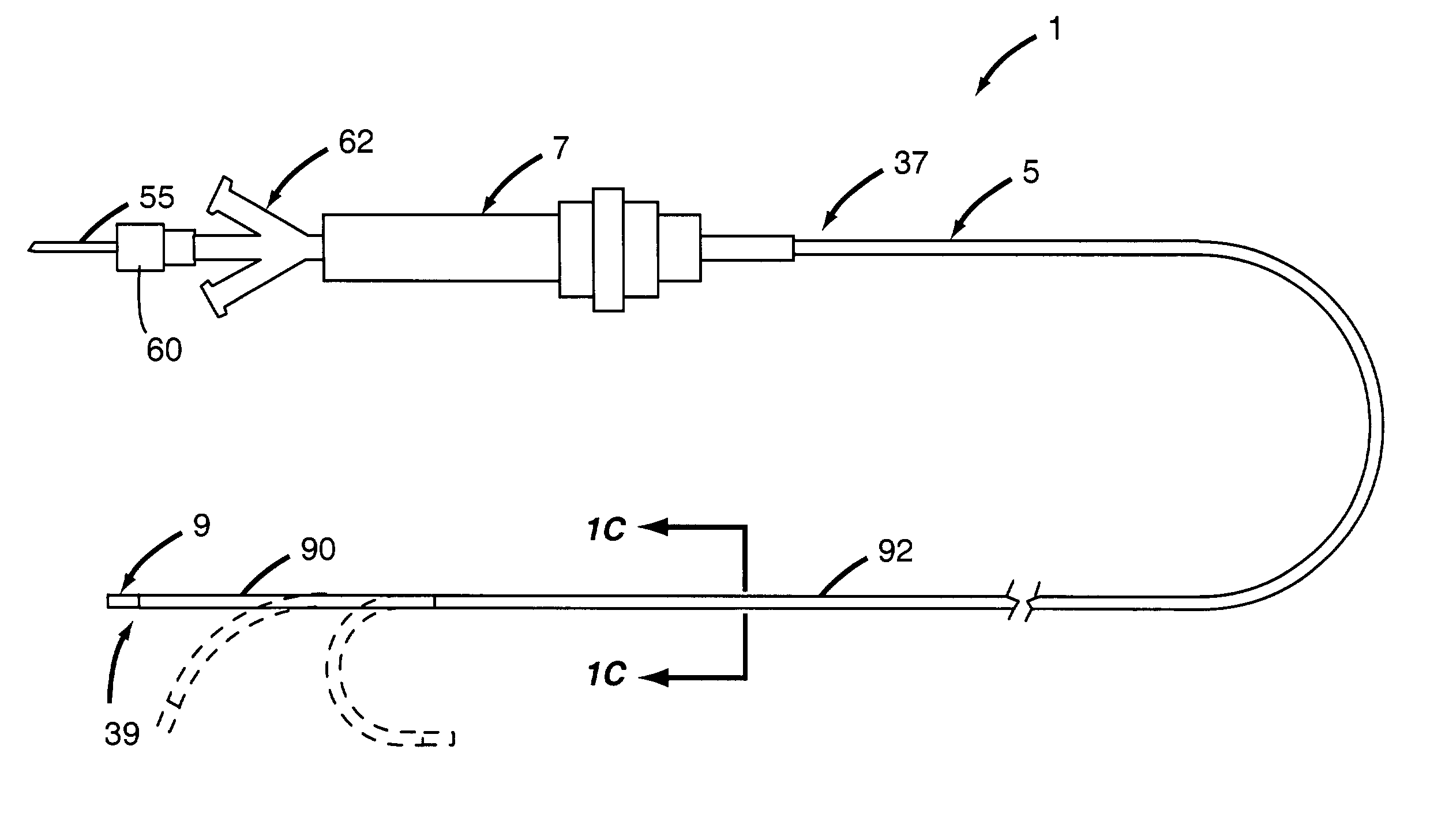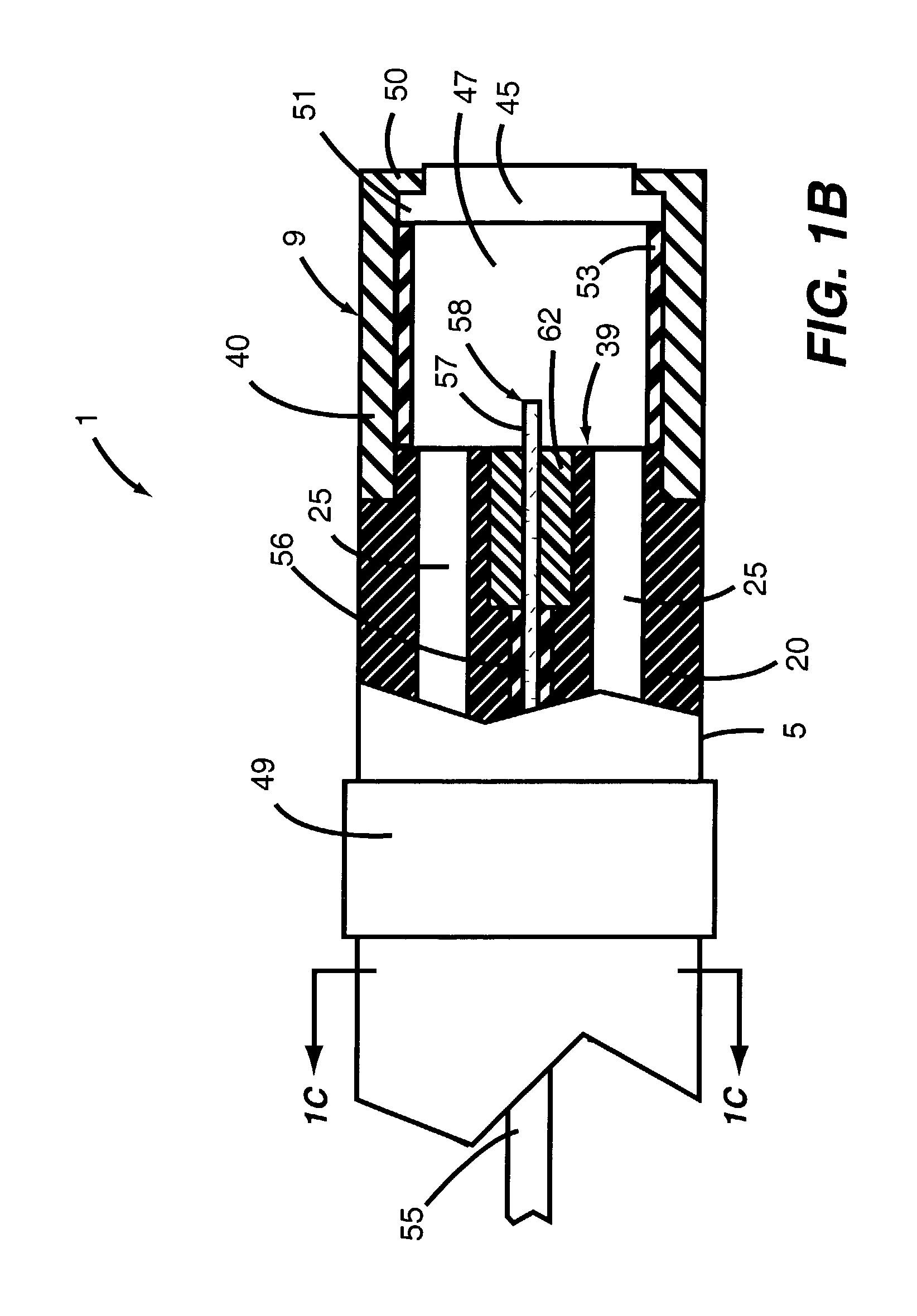Cooled tip laser catheter for sensing and ablation of cardiac arrhythmias
a laser catheter and cardiac arrhythmia technology, applied in the field of treatment of cardiac arrhythmias, can solve the problems of life-threatening condition, abnormally high rate of ventricular contraction, insufficient blood flow to heart muscles, etc., and achieve the effect of minimizing any post-operative discomfor
- Summary
- Abstract
- Description
- Claims
- Application Information
AI Technical Summary
Benefits of technology
Problems solved by technology
Method used
Image
Examples
example 1
Cooled Tip Laser Catheter System Construction
[0087] A Cooled Tip Laser Catheter (CTLC) system in accordance with an embodiment of the disclosures made herein was designed and built for facilitating creation of therapeutic lesions in a heart necessary to treat ventricular tachycardia. FIG. 4 depicts an embodiment of a Cooled Tip Laser Catheter (CTLC) system 200 in accordance with the disclosures made herein. The CTLC system 1 includes an energy delivery apparatus 205 (e.g., the energy delivery apparatus 1 depicted in FIGS. 1A through 1D), a feedback variable monitoring apparatus 210, a laser apparatus 215, a cooling medium supply apparatus 220 and an optic power meter 225. The feedback variable monitoring apparatus 210 and the cooling medium supply apparatus are attached directly to the energy delivery apparatus 205. The energy delivery apparatus 205 and the optic power meter 225 are connected in parallel with the laser apparatus 215. In other embodiment (not shown), light emitted fr...
example 2
In Vitro Studies
[0111] The Cooled Tip Laser Catheter (CTLC) system of Example 1 (i.e., the subject system) was utilized for performing in vitro studies on blood perfused canine myocardium. The intent of such studies was to establish optimum cooling rates and laser dosimetry for producing maximal lesion sizes. To this end, in vitro studies were designed to define suitable cooling rates and laser doses for which a therapeutic lesion size could be achieved with minimal or no charring at the endocardial surface.
[0112] In preliminary experiments, it was determined that the tissue temperature of an organ is the most important variable in maintaining physiologic conditions during in vitro experiments. Accordingly, an environmental chamber made of plastic sheet material and surrounded by a heated water jacket was used to maintain heart tissue at a normal body temperature of 37 degrees C.
[0113] Following these preliminary experiments, a number of in vitro studies were performed via in vitro ...
example 3
In Vivo Studies
[0119] To evaluate an ability to make therapeutic lesions in a safe and efficient manner with the Cooled Tip Laser Catheter (CTLC) system of Example 1 (i.e., the subject system), studies were conducted using the subject system in vivo on a canine model from an endocardial approach. Both acute and chronic animal studies were used to assess the performance of the subject system under in vivo conditions where perfusion in the ventricle chamber and heart tissue could affect resulting temperature distributions. In addition, it was important to assess the performance of the catheter component of the subject system on a beating heart to ensure the catheter remained in position and that cooling effects were maintained during delivery of laser energy.
[0120] The canine model was chosen due to its similarity in terms of anatomy, size, hemodynamics, and optical properties with that of the human heart. Both acute and chronic (2 wk, 4 wk, and 8 wk) studies were performed. Acute stu...
PUM
 Login to View More
Login to View More Abstract
Description
Claims
Application Information
 Login to View More
Login to View More - R&D
- Intellectual Property
- Life Sciences
- Materials
- Tech Scout
- Unparalleled Data Quality
- Higher Quality Content
- 60% Fewer Hallucinations
Browse by: Latest US Patents, China's latest patents, Technical Efficacy Thesaurus, Application Domain, Technology Topic, Popular Technical Reports.
© 2025 PatSnap. All rights reserved.Legal|Privacy policy|Modern Slavery Act Transparency Statement|Sitemap|About US| Contact US: help@patsnap.com



